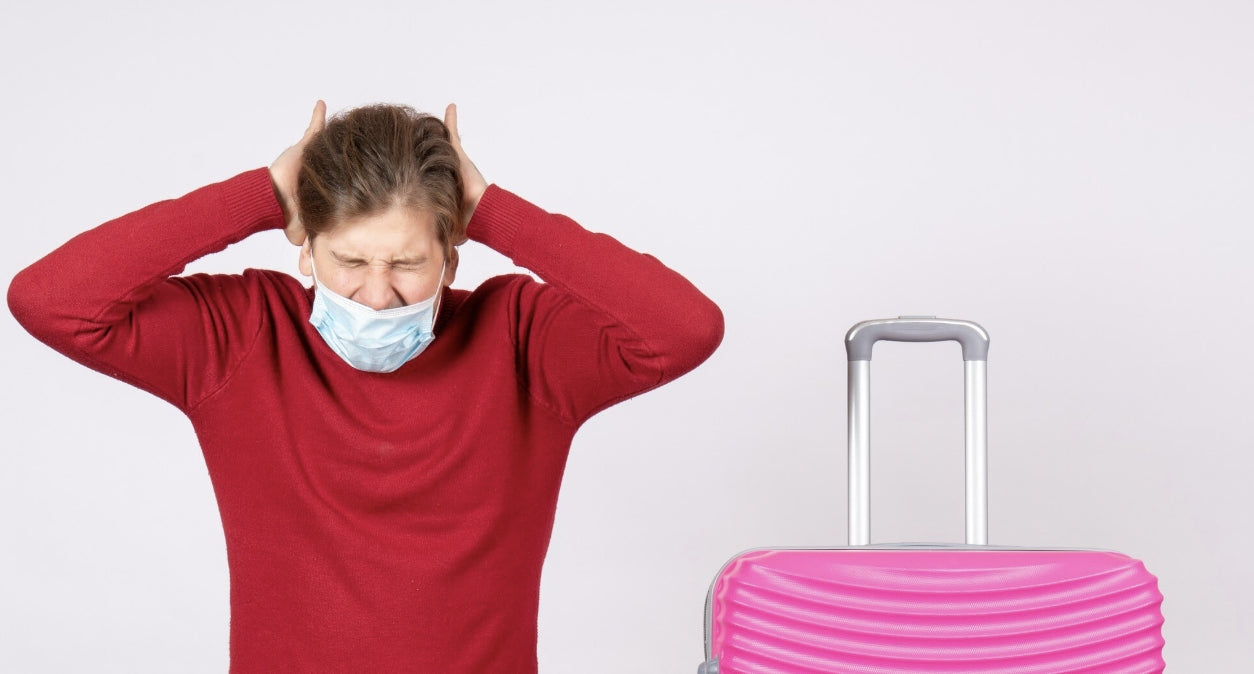
Kore Aviation - Experiencing ear pain on flights is a common discomfort that can flip the excitement of travel into anxiety, especially during takeoff or descent. The pain comes from pressure imbalances between your middle ear and cabin. But you can prevent it.
Below are expert tips on how to avoid ear pain during flight along with pilot-tested techniques using aviation headset technology.
Why Ear Pain Happens on Flights?
Ear pain during flight results because the air pressure in the cabin changes quickly while your middle ear needs time to adjust. The eustachian tube connects your middle ear to the back of your nose and throat and helps to balance pressure.
If that tube cannot open fast enough the pressure difference can stretch or hurt your eardrum. That discomfort is often called airplane ear or ear barotrauma. Sometimes the eardrum can even rupture in rare cases.
10 Ways to Avoid Ear Pain on Flights
Here are proven, easy-to-follow strategies to ease ear discomfort on a flight:
-
Chew Gum or Suck Candy
Chewing encourages swallowing which opens your Eustachian tubes. This helps pressure equalize naturally. -
Yawning or Swallowing Often
Yawning or swallowing frequently works like chewing gum to open those tubes and balance ear pressure. -
Use the Valsalva Maneuver Gently
Close your mouth, pinch your nose, and blow gently. This forces air into the middle ear. Use only if needed and gently. -
Use Decongestants or Nasal Sprays If Congested
If allergies or cold are a concern, take an over the counter decongestant about an hour before takeoff and again before landing. -
Stay Hydrated
Drinking plenty of water helps thin mucus and keeps your nasal passages clearer. -
Avoid Sleeping Through Descent or Ascent
If you are asleep, the natural swallowing that keeps ears open stops. Stay awake through descent to catch changes in time. -
Use Regulating Earplugs
Specialized earplugs (often called “airplane ear” plugs) equalize pressure gradually and reduce discomfort. -
Try Steam Relief
A flight attendant once offered a hot cup with a damp towel near a passenger’s ear. The steam helped open the Eustachian tube. It’s a simple trick worth sharing. -
Delay Flying If Sick
Flying while congested increases ear pain risk. Delay travel if possible or take extra precautions if you must fly. -
Consult a Doctor for Persistent Pain
If pain continues after your flight get checked by an ENT specialist. Persistent issues may require medical intervention.
Also read: What Happens If You Open an Emergency Exit on Plane?
Who’s Most at Risk?
- Children have narrower Eustachian tubes making them prone to ear pain. A bottle or pacifier helps.
- Adults with sinus congestion, allergies, or cold symptoms also struggle more. Equalizing pressure becomes harder.
When to Avoid Flying or Seek Doctor’s Help
- If you are sick or congested with a cold, sinus infection or allergy symptoms, ear tubes are at higher risk of blockage. Delay your flight if possible.
- If pain persists for days after flying or worsens significantly consult a healthcare provider. Persistent issues may need evaluation for Eustachian tube dysfunction or even surgical options like myringotomy.
How Pilots Avoid Ear Pain on Flights with Headsets
Pilots are exposed to these pressure changes regularly, especially during helicopter training or frequent climbs and descents. Here is how they manage ear comfort:
- Stay hydrated and practice swallowing or gentle equalization during descent.
- Avoid flying when sick or congested to minimize pressure related ear pain.
- Use aviation headsets designed for comfort and noise isolation. They help reduce fatigue and improve awareness of subtle pressure cues and communication clarity during altitude changes.
At Kore Aviation , we offer the flying headset that is high quality yet affordable. It helps pilots and passengers manage pressure changes by combining soft ear seals with comfort and clear audio.
Learn more about Why Do Pilots Wear Headphones? Aviation Essentials Explained
FAQs About Ear Pain on Flights
-
Can pressure cause lasting damage?
Usually no Most ear barotrauma resolves in time But severe cases may result in eardrum damage if not treated. -
Are children more at risk?
Yes. Their Eustachian tubes are smaller making they more prone to airplane ear. Sugars or pacifiers help. -
Should I avoid flights with a cold?
If possible, Yes. But if not consider a non stop flight and preventative measures like decongestants and earplugs. -
Can headphones cause ear pain?
They don’t prevent pressure pain but noise cancelling models help you detect pressure and communicate better during descent. -
What if pain persists after landing?
See a medical professional You may need treatment if pain lingers beyond the flight. -
What if pain persists after landing?
See a medical professional You may need treatment if pain lingers beyond the flight. -
Is there a device to bypass pain entirely?
Some frequent flyers get pressure equalization tubes inserted but this is a medical procedure and should be considered last.
Final Thoughts
Ear pain on flights can be prevented with simple methods like yawning, decongestants, earplugs and awareness. For pilots and serious travelers too the right headset matters for comfort and hearing protection.
Need a reliable headset that helps reduce ear discomfort and enhances your flying experience? Browse Kore Aviation headset for supreme comfort, clarity, and pressure awareness.
